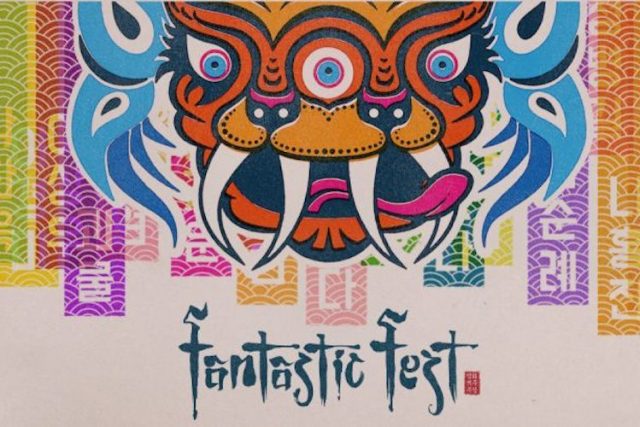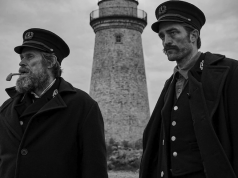
After last year’s bumpy edition of Fantastic Fest, roiled by revelations that its founder had continued working with employees and associates who’d been credibly accused of sexual assault, this year’s raucous genre celebration felt almost normal — well, “normal” for an event that includes a compilation of cinema’s best deaths-by-car, an eating contest (WHICH I WON), and themed tattoos at the closing-night party. Except for Tim League no longer being its public face and ringmaster, the festival felt largely like it did two years ago.
That’s mostly a good thing. Last year’s trouble wasn’t because the festival itself had been a particularly unsafe environment for women (compared to any other large gathering), but because men associated with the fest and its parent company, Alamo Drafthouse, had been permitted by League to keep associating even after he’d become aware that they were creeps (one admitted it; one still denies everything but is lying). It wasn’t “Fantastic Fest” as a whole that needed to change; it was League’s confrontation-avoiding, under-the-rug-sweeping, let’s-all-just-be-pals business practices — and the male-centric attitudes that accompanied them — that had to go.

So there was a shuffling of board members, the drafting of a new code of conduct, and League (who hadn’t been heavily involved in programming for a few years anyway) stepped away from the festival, though he remains CEO of the Drafthouse. He isn’t mentioned on the Fantastic Fest staff page, which now has more female members than it used to. After not being there at all last year, League was in attendance this week (as was his wife, Karrie), but he didn’t introduce films or host Q&As. His most visible public appearance was as a competitor in the eating contest (WHICH HE DID NOT WIN, BECAUSE I DID), dressed as a bottle of ketchup and following the Fantastic Fest ethos of day-drinking.
The best indication that Fantastic Fest had turned a corner happened on opening night. Last year’s opener, Three Billboards Outside Ebbing, Missouri — about a woman seeking justice for her daughter who had been brutally raped and murdered — was pulled by Fox Searchlight a few days ahead of time because of the controversy. This year’s curtain-raiser was Universal’s new Halloween — about a traumatized woman getting back at her male abuser after a 40-year wait — and not only did it play as scheduled, but Jamie Lee Curtis was there to support it and answer questions afterward. She would be a great “get” anyway, but having a universally admired female horror icon on hand to tacitly endorse the festival this particular year was a huge symbolic step forward. If Jamie Lee is cool with it, it must be OK, right?
 (Halloween is a better fit for Fantastic Fest than Three Billboards anyway. Universal had a man in a Michael Myers costume standing in the pavilion beforehand, posing for photos, and gave out Myers masks at the post-film party. What would Fox Searchlight have done for Three Billboards? Have an angry lady in a Frances McDormand costume? I mean, that’s actually a great idea, but what does it have to do with a genre festival?)
(Halloween is a better fit for Fantastic Fest than Three Billboards anyway. Universal had a man in a Michael Myers costume standing in the pavilion beforehand, posing for photos, and gave out Myers masks at the post-film party. What would Fox Searchlight have done for Three Billboards? Have an angry lady in a Frances McDormand costume? I mean, that’s actually a great idea, but what does it have to do with a genre festival?)
Over the course of the week, I didn’t hear anyone from Fantastic Fest make any kind of public reference to last year’s troubles. That was probably a good call. The degree of difficulty in finding the right thing to say in such circumstances is extremely high; best to leave it alone and move forward. Evrim Ersoy, the fest’s creative director, filled League’s shoes by introducing prominent movies like Halloween and the secret screening (which was Suspiria), his hyperbolic enthusiasm and occasional awkwardness an endearing contrast to League’s sloppy-but-slick showmanship. To the extent that Fantastic Fest is a gathering of movie geeks, Ersoy reflects that better than League does. I always liked League’s shenanigans, but that was because he seemed fun and cool, not because he seemed like me.
 Regular attendees could see that a few things had changed. A giant copy of that code of conduct was posted in the main hallway of the theater. Several of last year’s sponsors were gone, with a few new ones that included YouTube Originals and something called Legion M, which was consistently described as “the world’s first fan-owned entertainment company,” though we never found out what it actually does.
Regular attendees could see that a few things had changed. A giant copy of that code of conduct was posted in the main hallway of the theater. Several of last year’s sponsors were gone, with a few new ones that included YouTube Originals and something called Legion M, which was consistently described as “the world’s first fan-owned entertainment company,” though we never found out what it actually does.
Many of us could name people who used to come but weren’t there this year, either because they didn’t want to support the festival anymore or because they couldn’t afford the increased prices: The basic Fan Badge was $520, up from $425; the Superfan Badge (which guarantees your first choice in every screening slot), formerly $490, was $640 this year, not including taxes and fees. The rate hike, presumably to compensate for the lost sponsors, didn’t go over well with some fans; on the other hand, there were plenty of first-timers in attendance, and the website says all the badges sold out.**
And What About the Movies?
It’s hard to say whether the content of this year’s films was any different from usual, or if it was, whether it was deliberate. Movie trends are cyclical, and so are programmers’ tastes. (Also, there were 90 films in the lineup, and I saw a mere 30.) There used to be an uncomfortable number of movies with rape as a plot point, but that started changing a few years ago — whether because people stopped making them or Fantastic Fest stopped showing them, I don’t know. This year, I saw two movies in which a man stops another man from raping a woman, and only one in which rape was a significant plot point (and even then was only discussed, not shown).
Several of the films I saw had women doing what men usually do: kicking butt and/or taking names without being motivated by rape. Suspiria and Level 16 are both about groups of women taking control of their circumstances and not letting anyone — male or female — push them around. (So is The Perfection, though that one does involve sexual assault.) There’s Halloween, of course, which is about Laurie Strode, her daughter, and her granddaughter overcoming the effects of past abuse. Savage, Luz, and Cam are all about flawed women with dark sides who seek to empower themselves, while Border‘s protagonist is an unattractive woman who comes to understand and love herself (and who can also smell guilt and fear on people, incidentally). It feels like I saw less victimization of women than in years past — though, again, that trend has been waning anyway.
Which isn’t to say Fantastic Fest has gone soft. There was ample carnage, mayhem, gore, Nazis, cannibals, aliens, and demons, along with the thing that is Fantastic Fest’s most favorite thing of all: men punching and shooting each other. Donnybrook, Hold the Dark, The Standoff at Sparrow Creek, The Night Comes for Us, and Overlord are all centered on that theme, and it appears as a motif in many others.
But there was also an abundance of films without violence, or where the violence was fake and played for laughs. Keep an Eye Out, One Cut of the Dead, Mid90s, and The World Is Yours are all comedies, all of them recommendable, and all except Mid90s perfectly suited to the Fantastic Fest vibe. (Mid90s doesn’t clash, it just doesn’t have any genre elements.) After the Screaming Stops, its horrific title notwithstanding, is a pleasant documentary about the reunion of Matt and Luke Goss from ’80s British pop band Bros (pronounced Bross). It, too, belongs at Fantastic Fest only because it can be described as “awesome” — but as we’ve seen, there’s much to be gained by expanding the definition of Fantastic Fest to include more than just horror and violence.
Now let’s watch me win that eating contest.
**This is a subject for another article, but even with the rate hike, Fantastic Fest is cheaper than many festivals. If you have the $520 Fan Badge and see a movie in all 37 slots — the screenings are timed so this is actually possible — you’re paying $14.05 per movie. The comparable badge for SXSW 2019 was $825 if you booked it by Sept. 14 (it’s $925 now), which comes to $17.55 if you see every movie you possibly can (which would require rare scheduling miracles). Your most cost-effective option at Sundance is to buy 10 tickets for $500, or $50 per movie.




